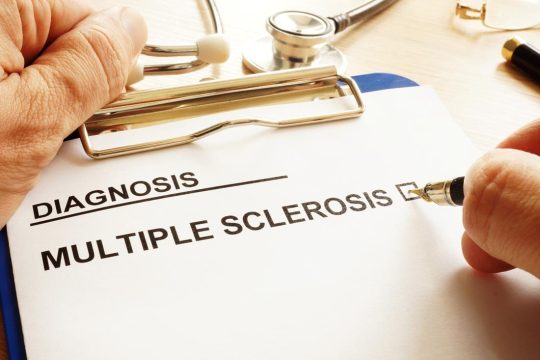Advertisment
ICS 2012 Report – Cost benefit analysis of transcatheter aortic valve implantation (TAVI) compared to conventional medical treatment including valvuloplasties in patients with severe aortic stenosis (AS)
by Edel O’Connell reporting on a presentation by Dr. Soon Wei Neoh.
Neoh S, Mahon C, Kiat C, Galvin B, Sugrue R, O’Neill C, Crowley J, Foley B, Crean P, Sharif F. University College Hospital Galway; St. James’s Hospital, Dublin; AMNCH, Dublin.
TAVI not only far outweighs conventional medical treatment in terms of superior outcomes but subsequent reduced readmission rates, lower mortality rates and increased quality of life results in long term savings.
Surgical aortic valve replacement is considered the gold standard treatment for symptomatic Aortic Stenonis however, due to changing demographics the number of octogenarian patients with symptomatic Aortic Stenosis is rising.
These patients have substantial risk for aortic valve surgery due to the presence of severe co-morbidities.
“Transcatheter Aortic Valve Replacement (TAVI) has emerged as an alternative treatment for patients with Aortic Stenonsis who have high estimated surgical risk,” explained Dr Neoh.
European registry data and the United States PARTNER I trial(s) indicate that the benefit of TAVI is unquestionable.
In the randomized PARTNER I(B) trial which compared TAVI to ongoing “standard” medical therapy for aortic stenosis, mortality at one year was 20 per cent less in the TAVI group and combining death and repeat hospitalisation was even more striking at 28 percent less.
“It has been proven that TAVI provides superior outcomes compared to conventional medical treatment, including aortic valvuloplasties, in patients with severe symptomatic aortic stenosis,” Dr Neoh commented.
“The Partner (Placement of Aortic Transcatheter Valve) 1 B trial showed the mean cost for TAVI was $32,800 dollars which accumulated to $78,500 for the initial hospitalisation and $106,000 at one year. Compared with medical treatments TAVI was $52,000 more expensive at one year than conventional treatments but the quality of life was significantly better who underwent TAVI,” he added.
This resulted in an incremental cost effectiveness ratio of$ 50,200 US dollars per life year gained and $61,880 per quality adjusted life year.
Therefore Partner 1 B trial concluded that TAVI increases quality adjusted life year at a reasonable cost similar to other cardiovascular technologies.
The research took the form of a retrospective, two-centre study. The research was conducted between Galway University Hospital (GUH) and St James Hospital.
Between 2009 and 2011 a total of 44 patients who underwent TAVI at St James Hospital were included in the study group.
In Galway University Hospital’s department of cardiology 42 patients treated with conventional therapy were included
For this research Prof Meoh evaluated the cost effectiveness of TAVI compared with conventional medical treatment including valvuloplasties in patients with severe AS who were considered too high-risk for AVR.
In addition, he also assessed Quality of Life (QOL) and mortality rate between the two groups.
.At GUH, retrospective chart reviews were conducted over two year period in patients who had severe AS, were high risk for AVR and were treated with conventional medical treatment.
The mean age of the patients was 84 years old of whom 53.4 per cent were male and 46.5 per cent were female.
For each patient, the number of admissions, inpatients and outpatients days, type of bed occupied, number of Echo, valvuloplasty and TAVI performed in the last five years were assessed.
The Unit cost was estimated by Casemix and typically TAVI cost approximately €18,000.
Patients were also ask to rate their health status and to fill out EQ5DQOL questionnaires.
As compared with patients receiving conventional treatment, patients in the TAVI group had an overall higher total cost at €30,140 and the mean cost of those who underwent conventional treatment was €15,265.
Therefore the mean total cost of patients who underwent TAVI was double that of conventional therapy.
However, according to Dr Meoh those who underwent TAVI had significantly lower readmission rates versus conventional treatment and a lower mortality rate at 9.3 percent versus 30.9pc for conventional treatment.
In the quality of life study, the mean health percentage in the TAVI group was 68.6 percent whilst the mean for conventional treatment was 56.8 per cent.
Overall those who had TAVI reported 11.8 per cent, on average, higher health percentage quality of life compared with those who had conventional treatment.
With regard to mobility, self care, activity, pain and anxiety, patients who had TAVI demonstrated a far higher percentage of experiencing no problems after treatment.
“We recorded a much higher percentage of having some or severe problems following conventional therapy,” commented Dr Neoh.
In this study, the total cost of treatment with TAVI was significantly higher compared with conventional medical therapy for patient with AS high risk for AVR.
However, he concluded patient treated with TAVI has lower readmission rate, significantly lower mortality rate and better quality of life. The researcher calculated an incremental cost effectiveness ratio of €1,652 per life year gained.





